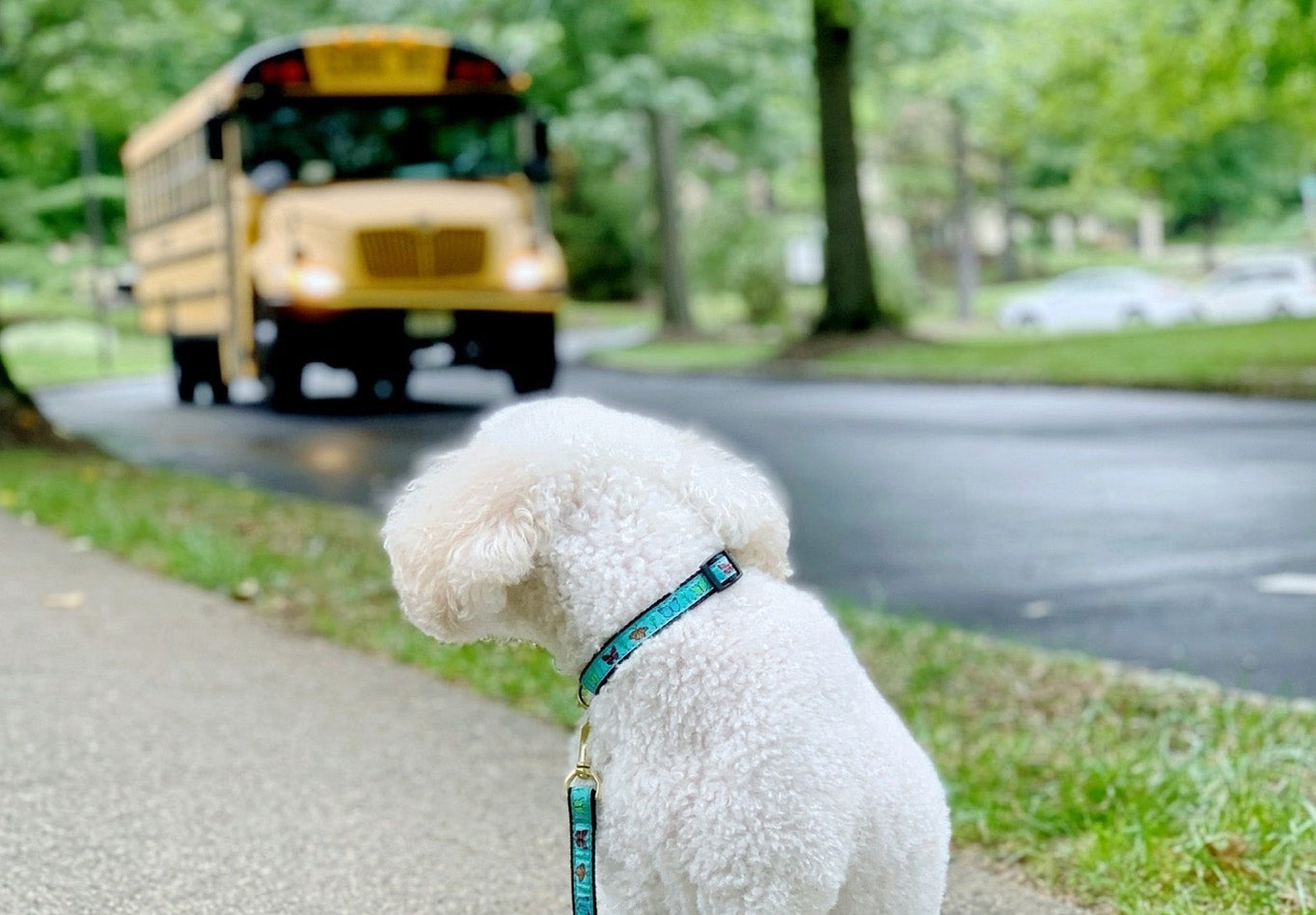Back to (Training) School

Ah, fall is imminent, and the kiddos are going back to school. So, what does this mean for your four-legged friend? Training school! If your dog is the epitome of sainthood, please feel free to stop reading and go shine his halo - and give him a well-deserved kiss from us. However, if your dog has a few bad habits that you think are “so cute,” but make others cringe when they know your dog is around, then maybe a wee bit of training is in order.
For example, we all have that friend who has the cutest dog ever, BUT Princess has no qualms about stealing your food like its home plate at the 8th inning of the World Series. Let’s face it, guests shouldn’t have to carry their food above their head like your house is flooded. It’s awkward and embarrassing if their deodorant is a total fail. And no, little Puddin’ Pie isn’t being, “So naughty that she’s being so cute.” NOBODY thinks that. N-O-B-O-D-Y. And while we’re on the subject, you can add these to the well-intentioned category: Jumpity Jumpster, Inappropriate Sniffer, Save Hump Day for Wednesdays, I Nip Therefore I Am, I’ll Defend My Toys to the Death, Your Leg Marks the Spot, and Barks at Bugs (and everything else.)
Being a responsible dog owner is just that – being responsible. If you plan on bringing your dog out in public, inviting guests over for a party, or sending Pumpkin to doggie daycare, then you should consider the following training options based on the issue, as well as if you’re starting off with a puppy or looking to modify negative behavior in an adult dog.
BIG BOX TRAINING CENTERS
Some of the large chain pet stores offer different levels of training for your dog, such as Petsmart and Petco. PROS: They’re usually endorsed and use a tried and true training program such as The American Kennel Club Canine Good Citizen certification program. The classes can also be a good value in that they are priced right (coupons are frequently offered) and are in a convenient location. CONS: Trainer turnover can be high, so oftentimes you can’t develop a long-term relationship with a particular trainer. Group sessions can sometimes be distracting.
LOCAL TRAINING CENTERS
Local training centers tend to be more personal and you can more easily get reviews through word-of-mouth, social media town pages, and the like. PROS: It’s usually the main part of their business, so they are highly specialized, and depending on the number of years they’ve been in business, they have “seen it all.” You can also develop a more lasting relationship, and even a home-based training plan. CONS: You have to do more legwork to make sure they are accredited, reliable, and effective. Also, good or bad, they might use their own homegrown training methods.
LOCAL TRAINERS
Local trainers usually come to your house for private sessions and one-on-one training. Some local pet shops might offer in-store training as well, which is a plus. PROS: Their training is tailored specifically to your dog’s needs, the training can occur in the comfort of your own home, and in their territory, and you can usually develop a long-term relationship. CONS: If you don’t mesh with the trainer, you might be stuck with them until the training is over. Also, if it doesn’t work, you will have little to no recourse unless negotiated ahead of time.
DIY
If your dog has a simple behavior that needs correcting, then consider doing some online research and try to tackle the problem yourself, first. Some good options include YouTube, which has thousands of videos to choose from, celebrity trainer sites such as Cesar Milan, the American Kennel Club, or, if you’re lucky enough, tap into that one friend you have who seems to be a dog whisperer! PROS: Nobody knows your dog better than you. Also, you can keep the training consistent since you will be controlling it, all while developing a rapport that will last a lifetime. CONS: DON’T train your dog if you have absolutely no idea what you’re doing; you don’t have the time to invest in seeing it through to a success; and if you are going to “feel bad” that you must be firm but fair.
The above are meant to be guidelines. Just as you wouldn’t drop your child off at daycare without having done your research first, nor should you just assume any option will work for your dog. Be sure to check online reviews, ask around, and visit with potential trainers so you and your dog can get a feel for their training methods, personality, success rate, and more. Also, always get the training expectations in writing.
Lastly, here are a few training tools to help:
- Training Lead comes in 12’ and 20’ lengths.
- Martingale Collars are styled in a gentle way to have control over your dog that pulls or easily slips out of their collars.
- Dog Harnesses provide the perfect amount of control.
- Doggie Doorbells can help train your dog to signal you when they need to go out.
Good luck with whichever method you choose, and remember…an ounce of prevention is worth a pound of cure!





